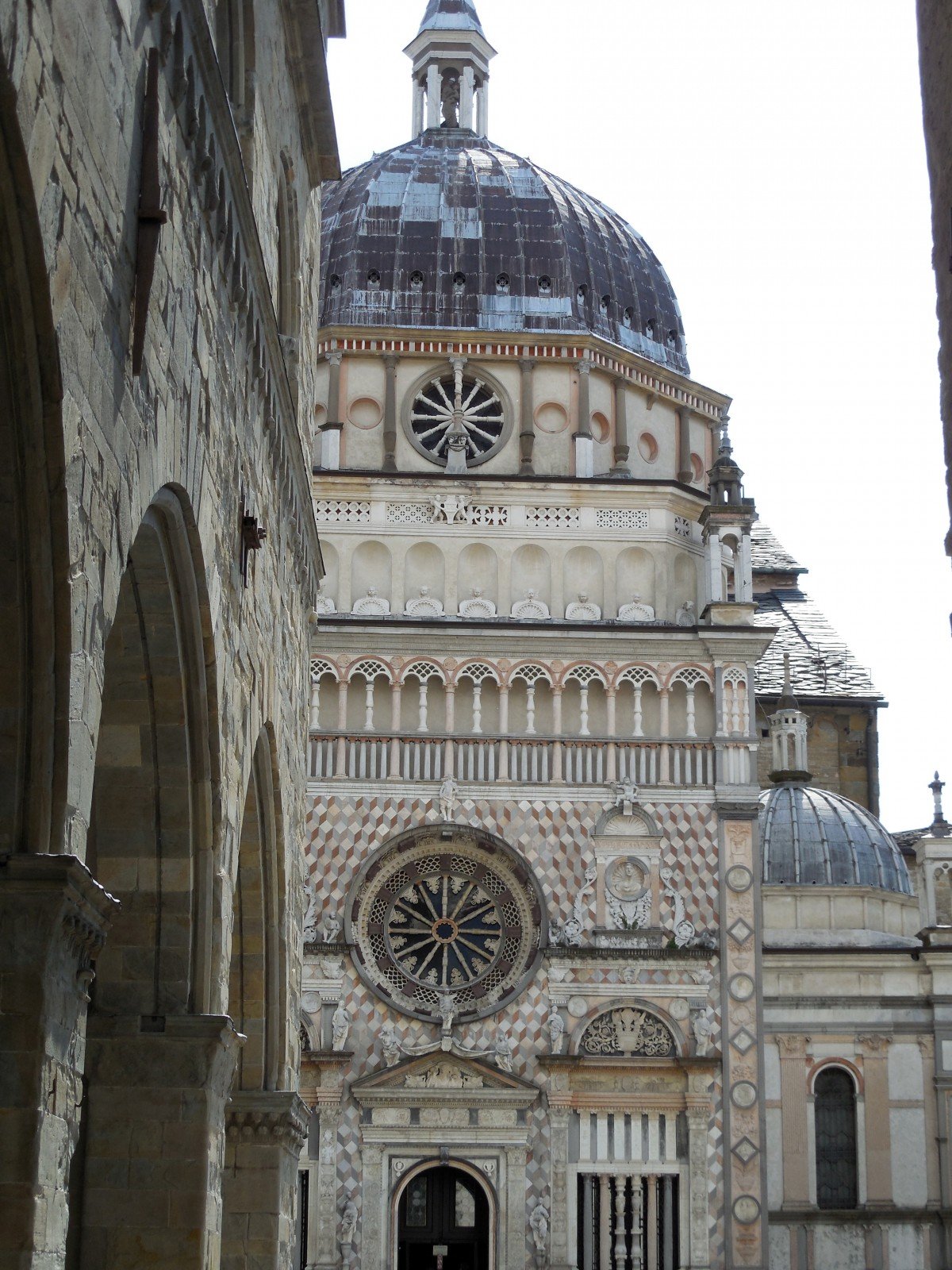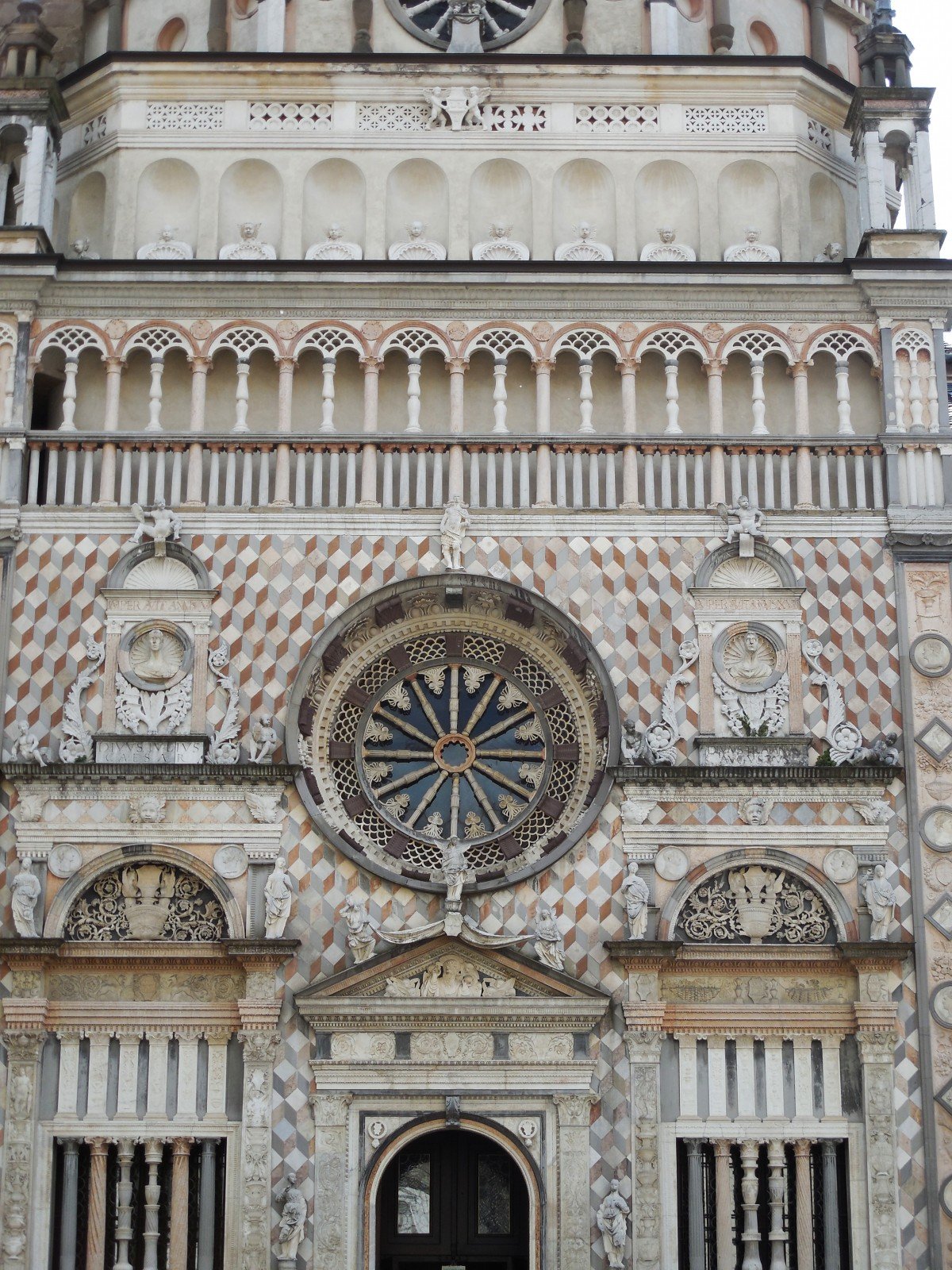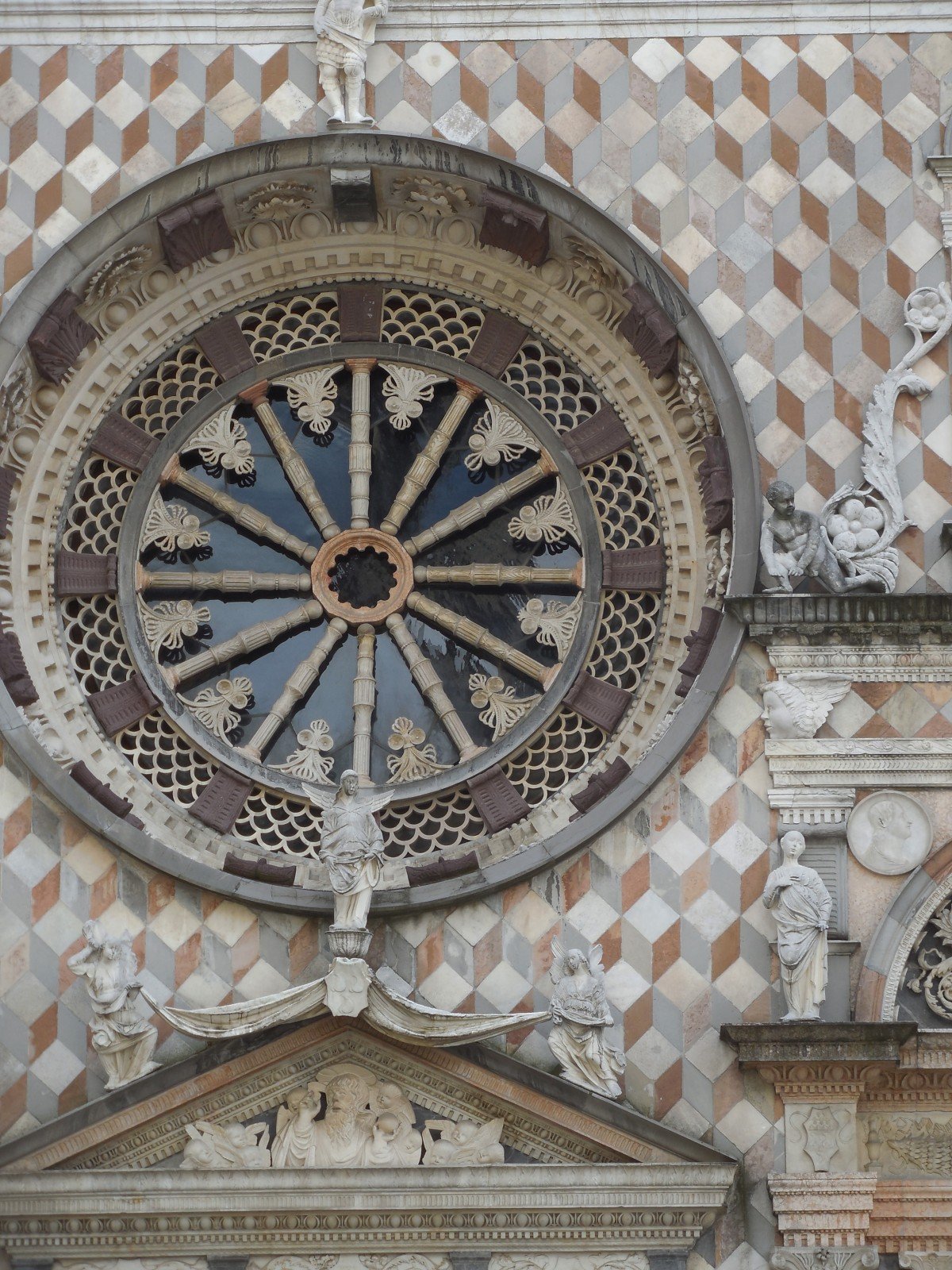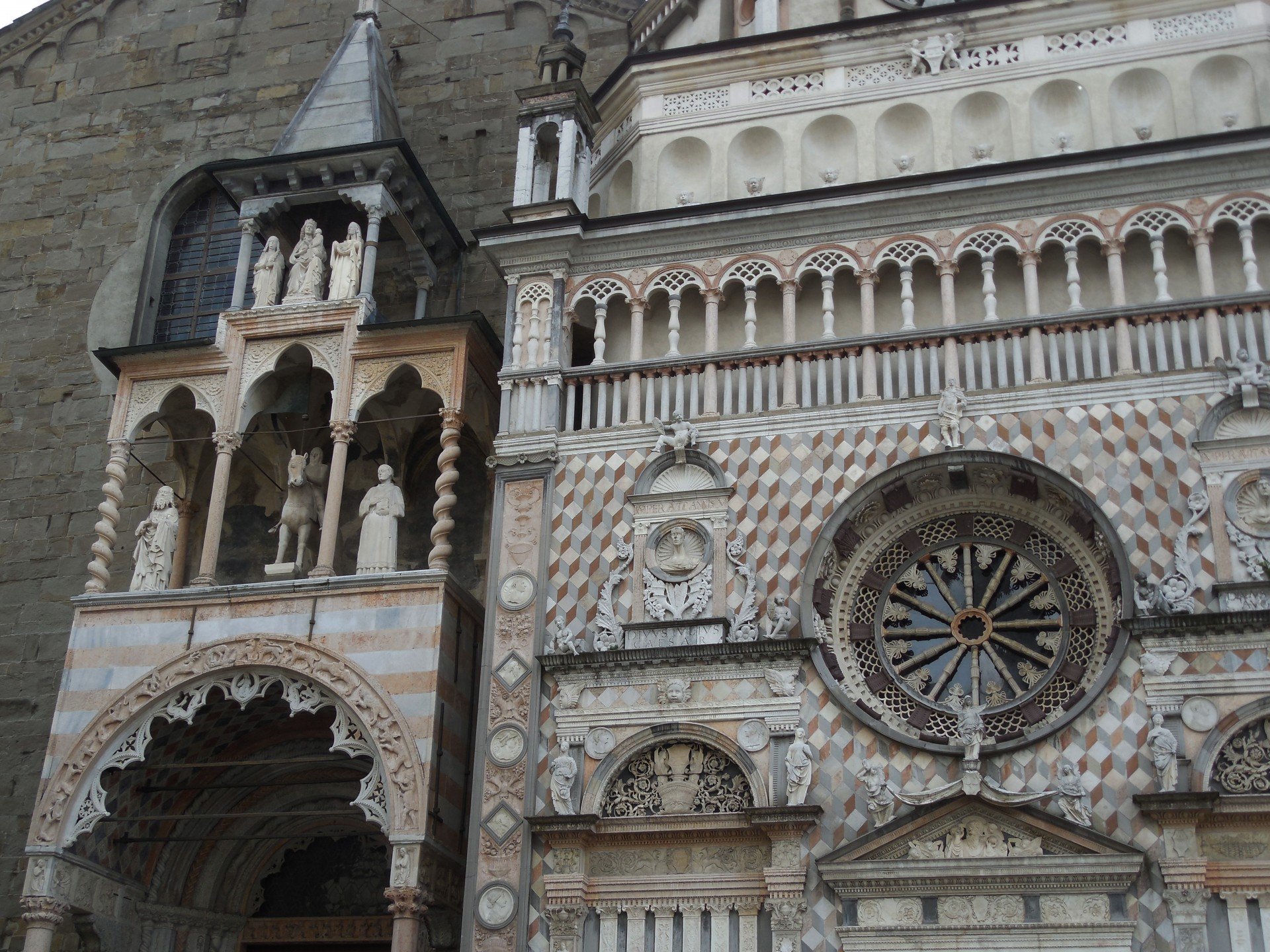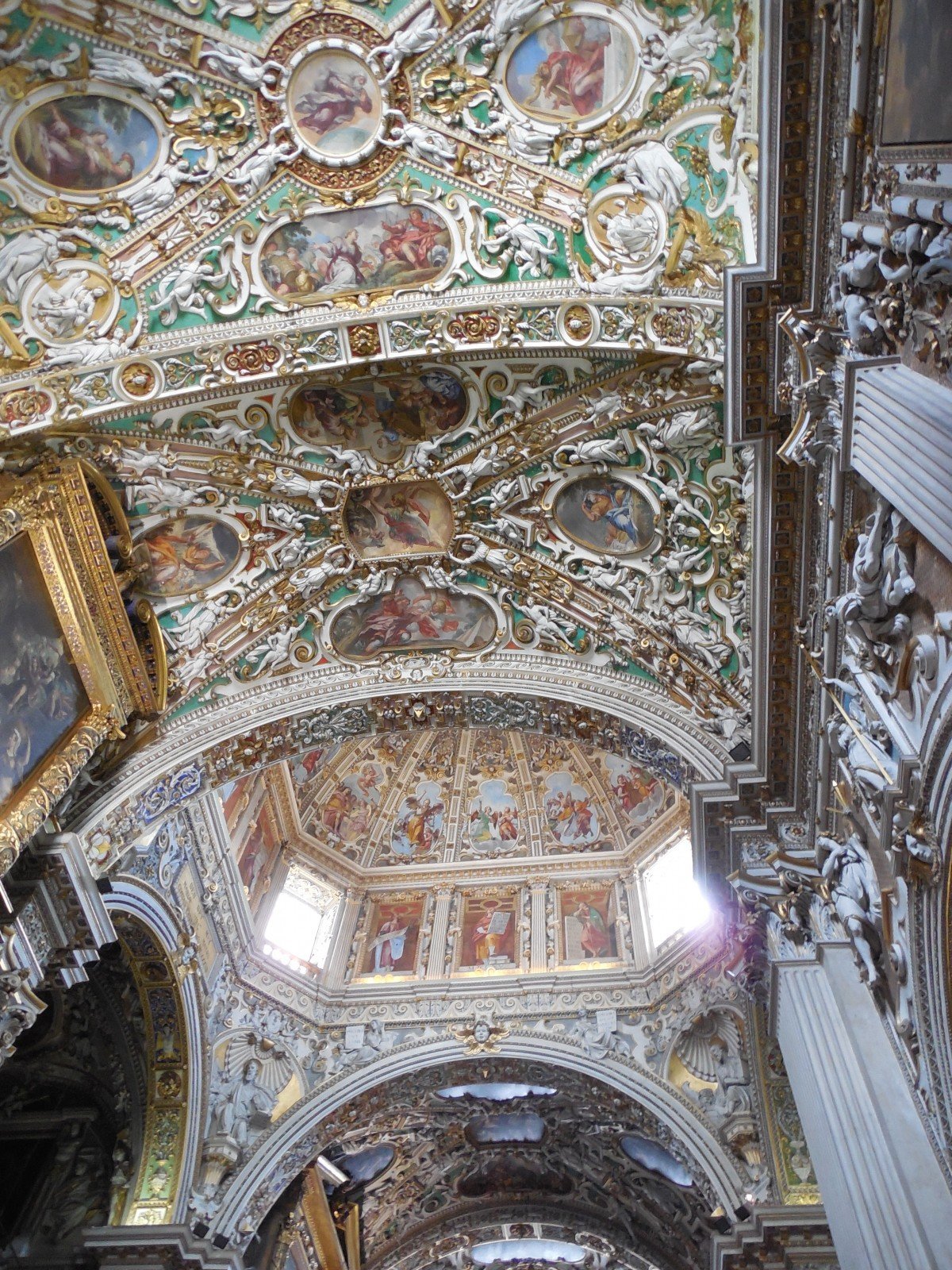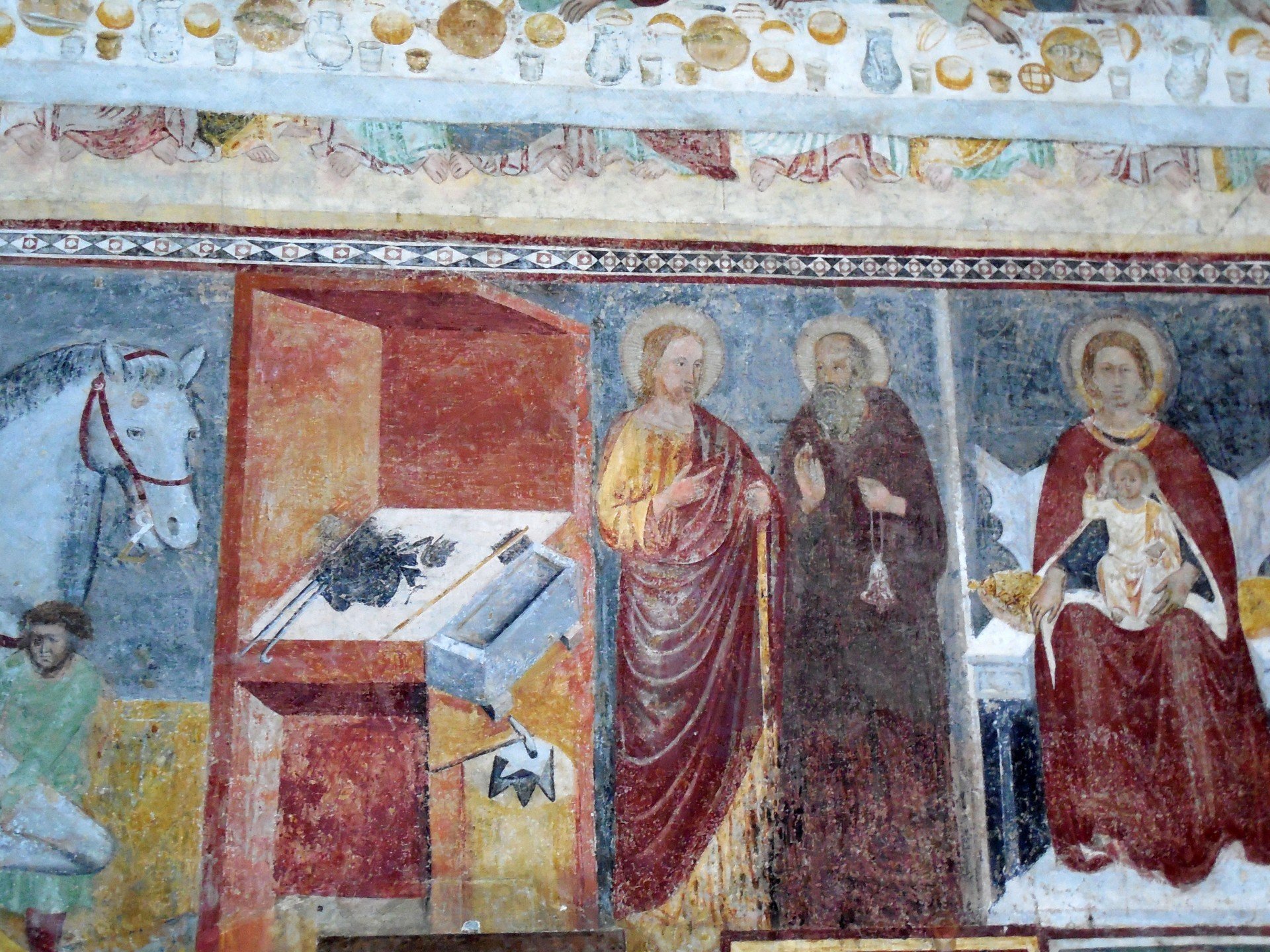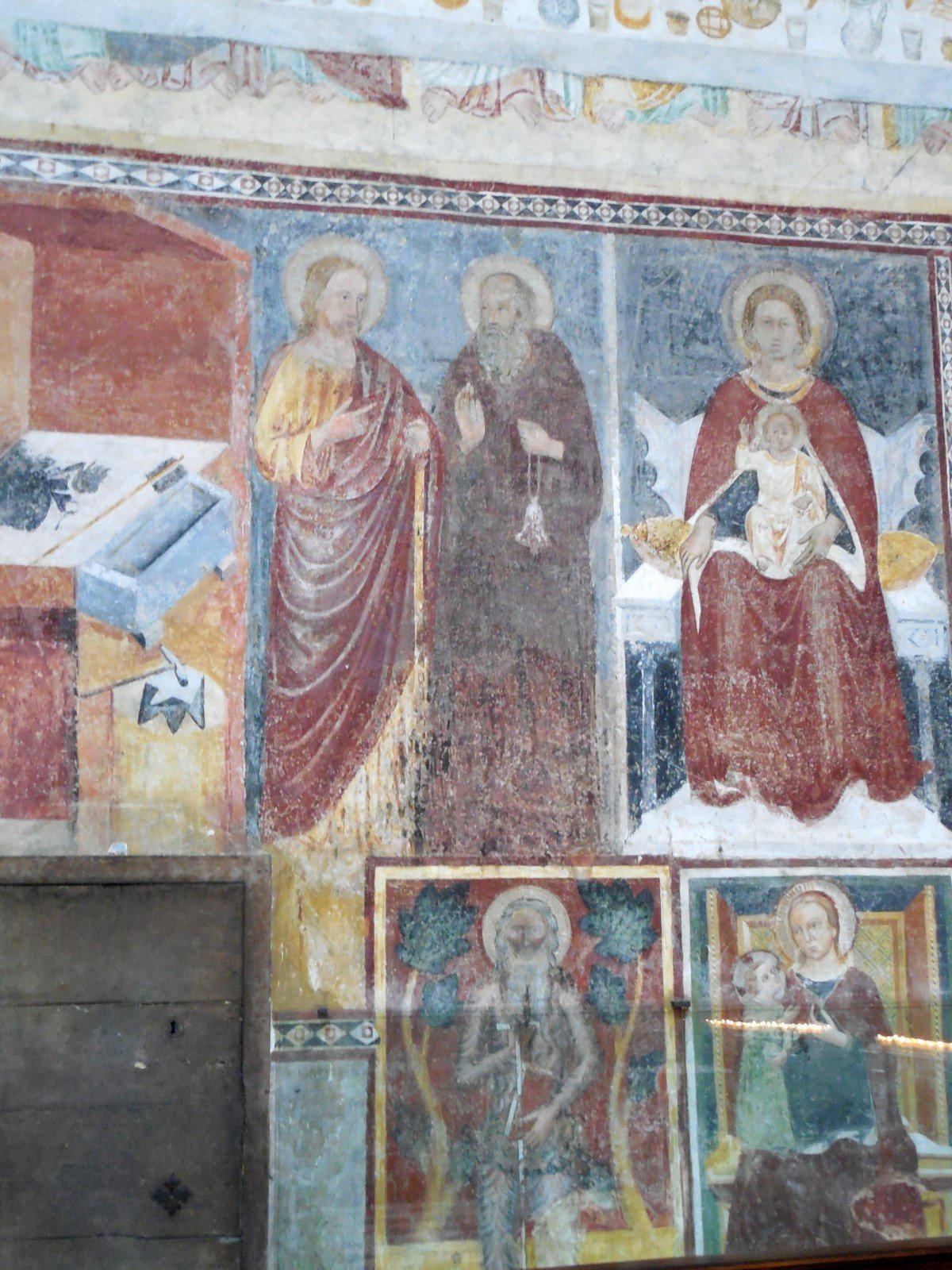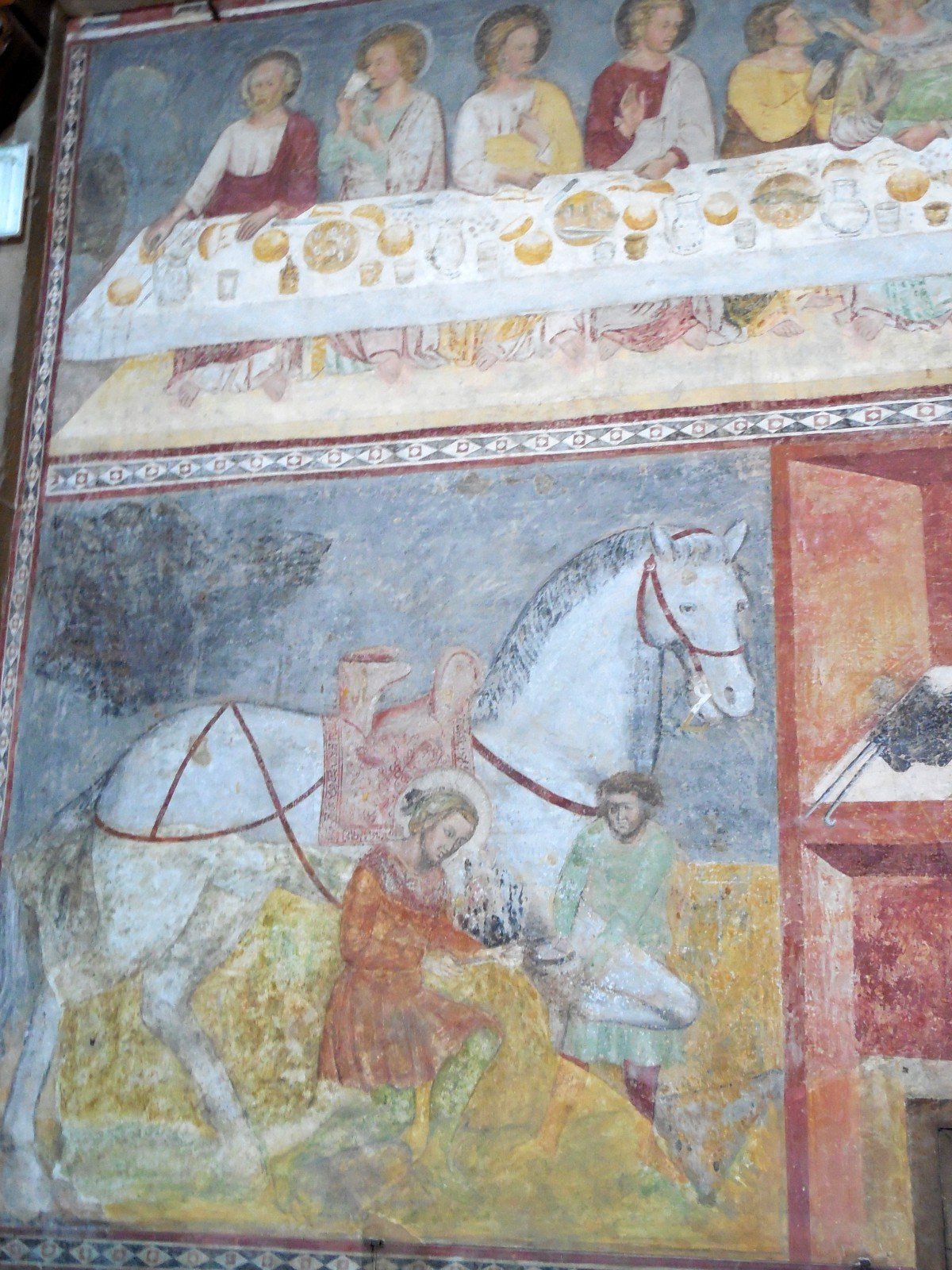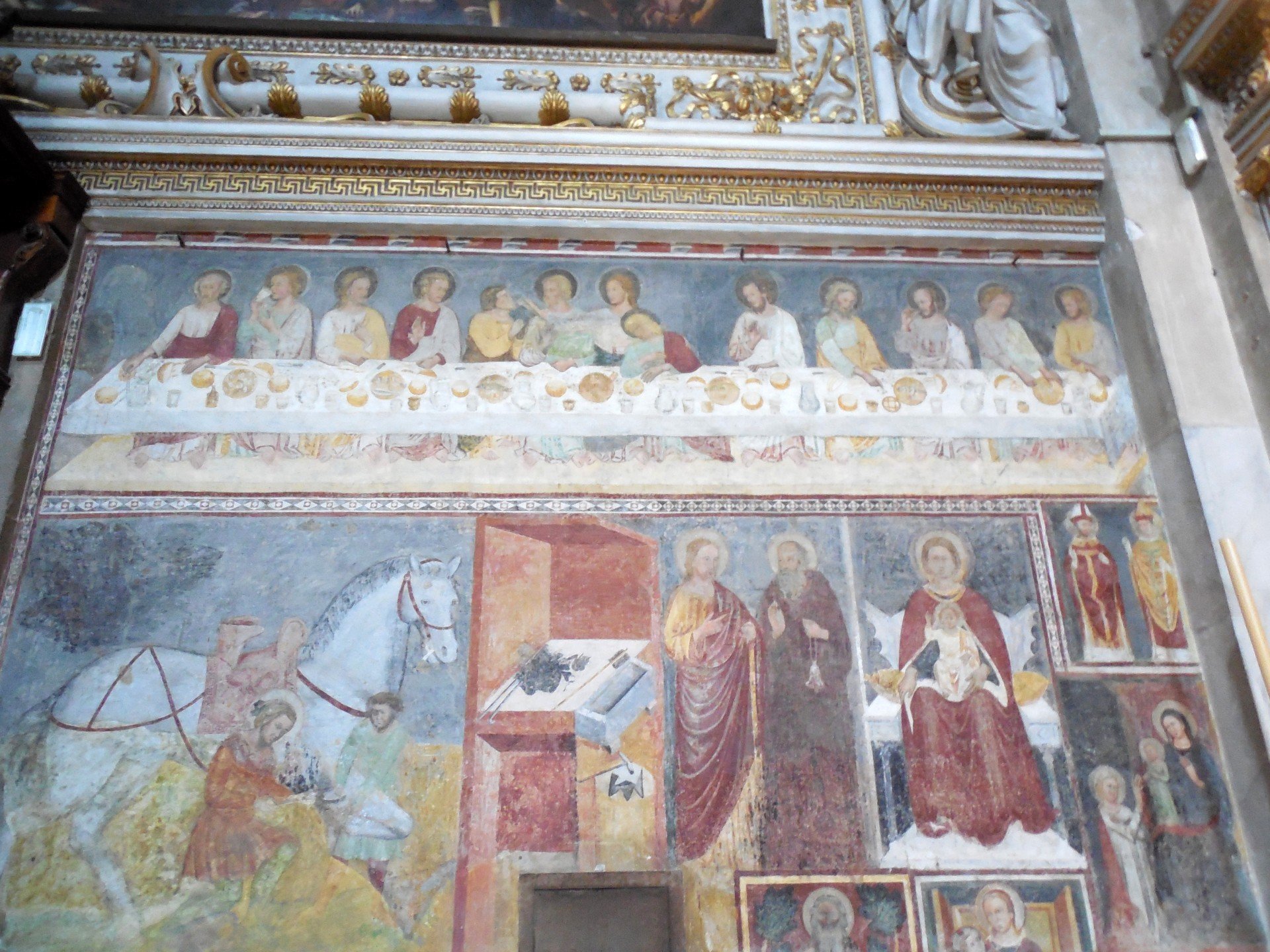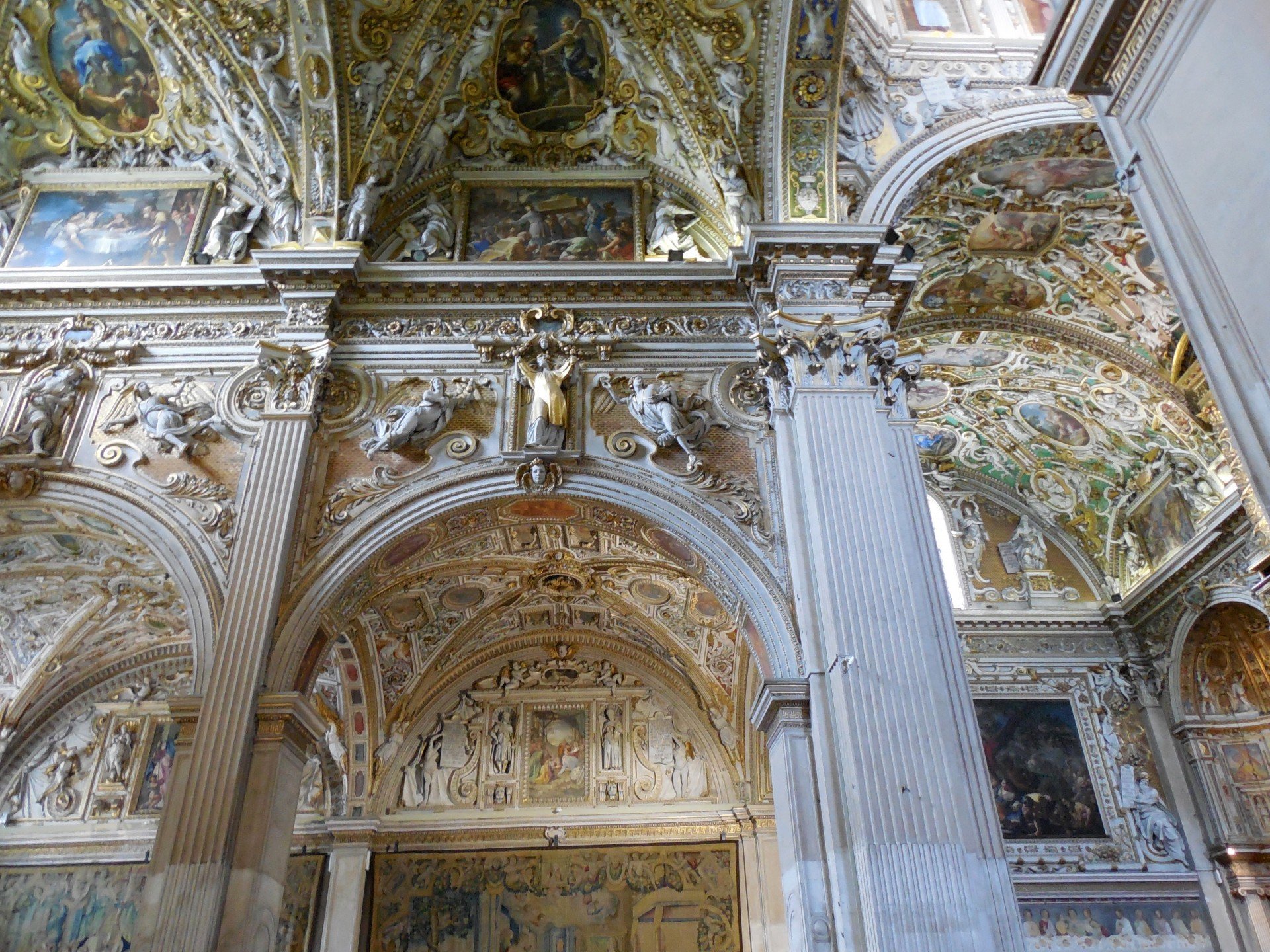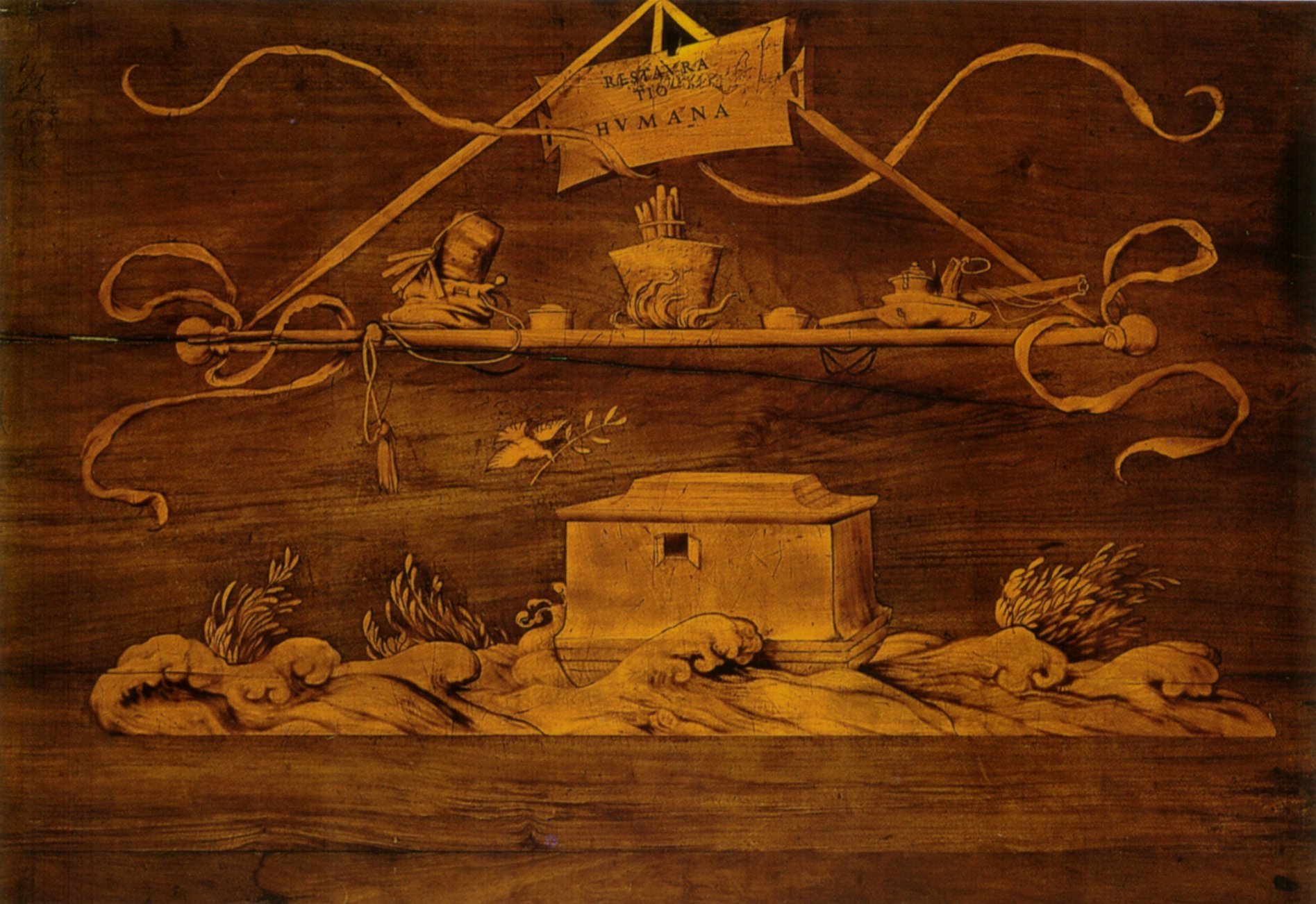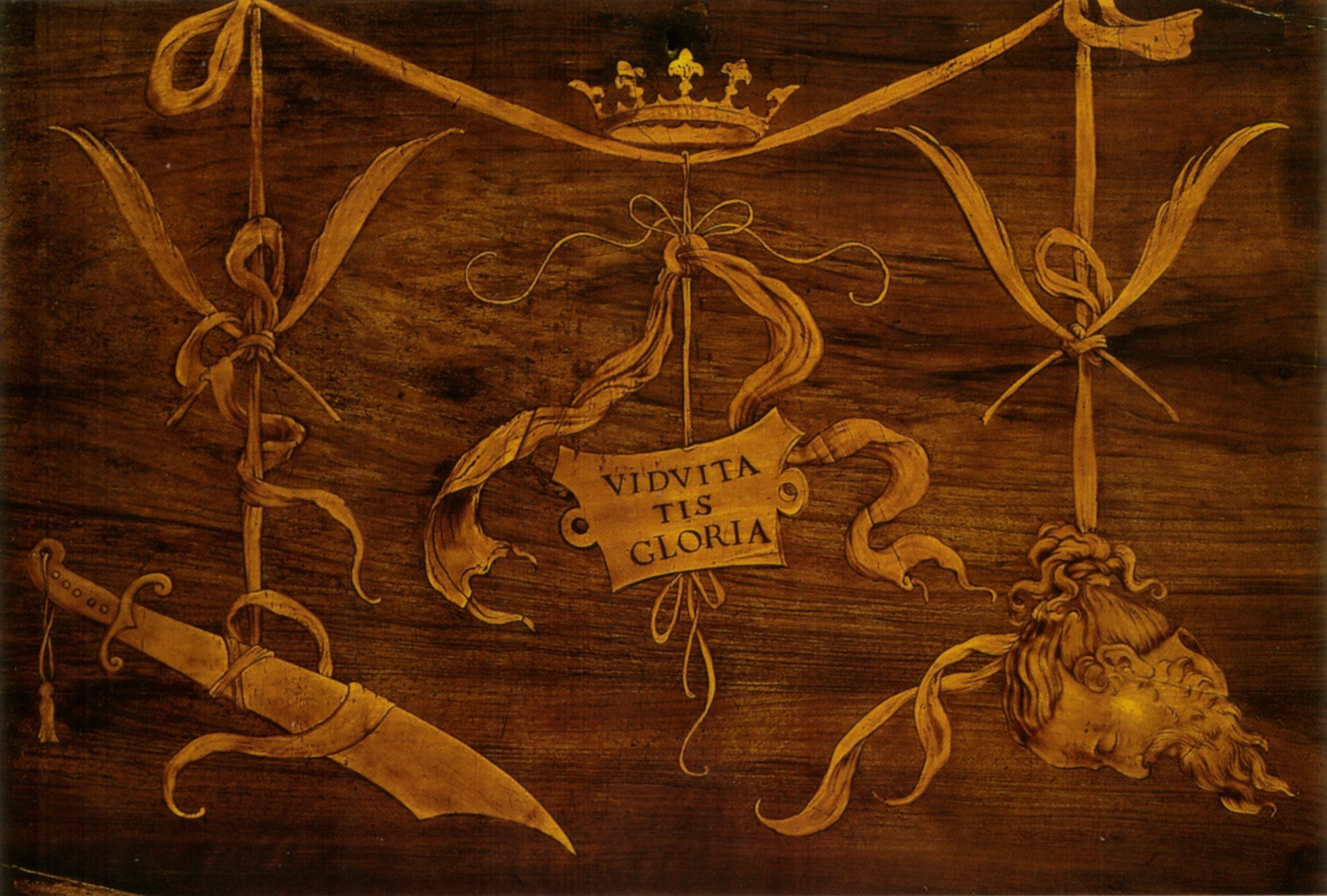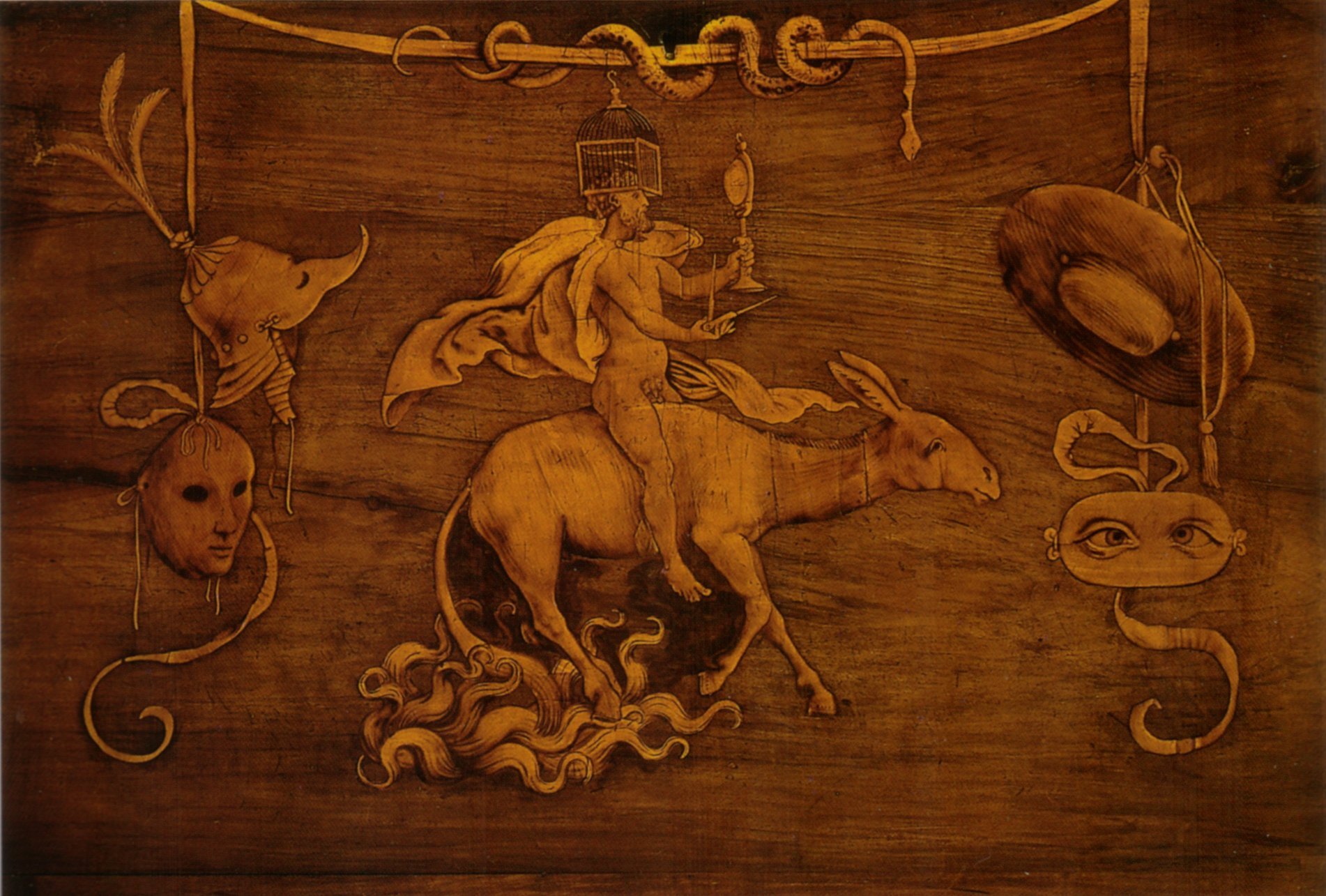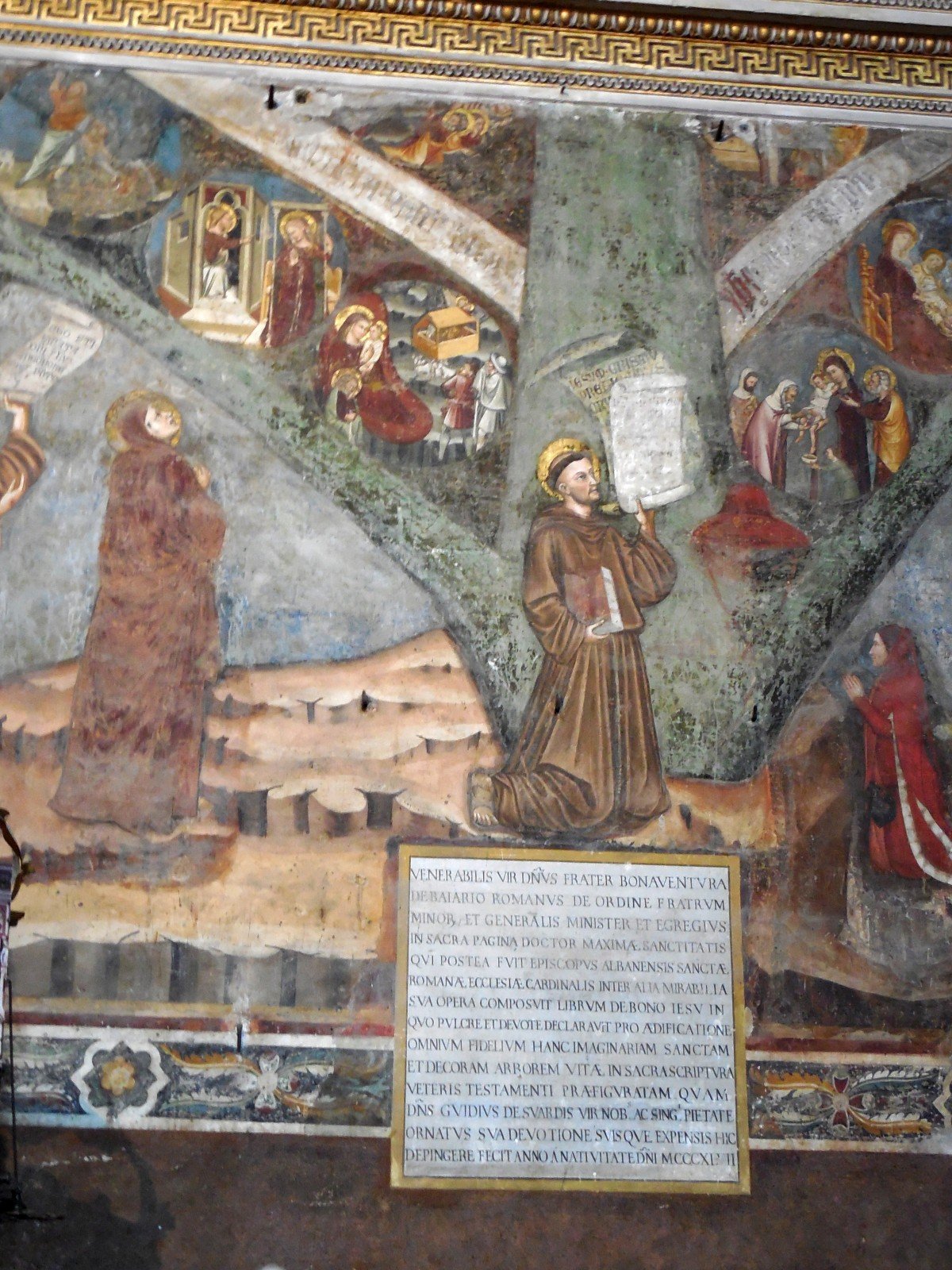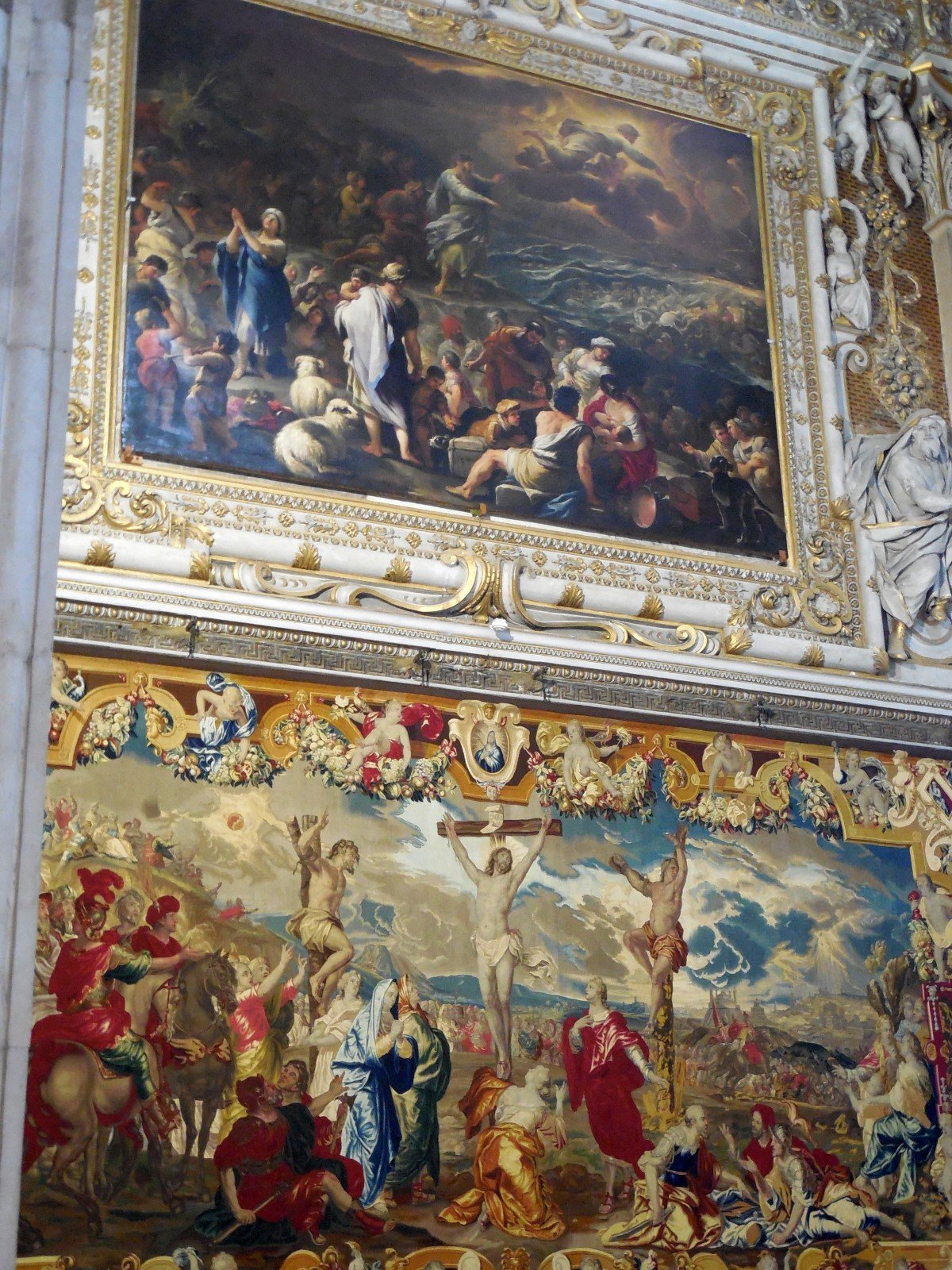Even the most protected historical building is the result of several eras of contemporary art
- Bergamo, Basilica di Santa Maria Maggiore, detail of the facade
- Bergamo, Basilica di Santa Maria Maggiore, detail of the facade
- Bergamo, Basilica di Santa Maria Maggiore, detail of the facade
- Bergamo, Basilica di Santa Maria Maggiore, detail of the facade
- Bergamo, Basilica di Santa Maria Maggiore, interior
- Bergamo, Basilica di Santa Maria Maggiore. Frescoes depicting the Last Supper and Stories of St. Eligius, XIV century
- Bergamo, Basilica di Santa Maria Maggiore. Frescoes depicting the Last Supper and Stories of St. Eligius, XIV century
- Bergamo, Basilica di Santa Maria Maggiore. Frescoes depicting the Last Supper and Stories of St. Eligius, XIV century
- Bergamo, Basilica di Santa Maria Maggiore. Frescoes depicting the Last Supper and Stories of St. Eligius, XIV century
- Bergamo, Basilica di Santa Maria Maggiore, interior
- Bergamo, Basilica di Santa Maria Maggiore, wood inlays of the choir
- Bergamo, Basilica di Santa Maria Maggiore, wood inlays of the choir
- Bergamo, Basilica di Santa Maria Maggiore, wood inlays of the choir
- Bergamo, Basilica di Santa Maria Maggiore, wood inlays of the choir
- Bergamo, Basilica di Santa Maria Maggiore, “Tree of Life”, fresco, XIV century
- Bergamo, Basilica di Santa Maria Maggiore, “Tree of Life”, fresco, XIV century
- Bergamo, Basilica di Santa Maria Maggiore, tapestry with “Crucifixion”, performed in 1698 on a design by Ludwing van Schoor, and above it there is a painting by Luca Giordano with the “Passage of the Red Sea” made in 1681
- Bergamo, Basilica di Santa Maria Maggiore, tapestry with “Life of Mary”, performed between 1583-86 and designed by Alessandro Allori
When talking about works by contemporary artists in ancient contexts, a lot of controversies generally tend to come up. Very often contemporary art is considered incompatible with the architecture and the paintings of the past. But perhaps the issue is ill-posed. As a matter of fact, the core of the speech shouldn’t lie in the category of time, but in the one of quality.
The Basilica of Santa Maria Maggiore in Bergamo represents a good instance of how high-quality works from different epochs can actually coexist in the same context. This stratification doesn’t produce a disturbing effect. On the contrary, it creates a certain harmony which is not spoiled even by the great wealth of interior Baroque ornamentation.
There are many valuable works inside the basilica. In the right transept, for example, you can spot “The Tree of Life”, which is a type of Giotto’s fresco executed in 1347. The “Great Flood” by Pietro Liberi (1661), a painter little known but highly educated and cosmopolitan, as shown in this painting – born in Padua, the artist traveled to Turkey, Hungary, Portugal, Rome and Venice. On the cruises of the transept is decorated with paintings from the seventeenth century by artists such as Nuvolone and Luigi Scaramuccia, and on an the altar there is “The Last Supper” by Bassano the Younger (1584). The extraordinary wooden choir with intarsia was designed by Bernardino Zenale, Andrea Previtali and Lorenzo Lotto (1480-1556).
The Basilica’s tapestries are excellent too. There are those of the sixteenth century, Flemish, with landscapes and hunting scenes. Some florentines ones, executed from designs by Alessandro Allori in the late sixteenth century – with scenes from the life of Mary; and again, other Flemish pieces of the seventeenth century, such as that of Ludwig van Schoor with the “Crucifixion”, performed in Antwerp in 1698 – above it there is also painting by Luca Giordano with the “Passage of the Red Sea” made in 1681.
On the back wall, there is a monument to Gaetano Donizetti by Vincenzo Vela from, 1855; at the beginning of the left aisle, a Baroque-style carved wooden confessional by Andrea Fantoni, 1704; on the railing of the presbytery, a crucifix of the fourteenth century.
The basilica, already in an advanced stage of construction in 1187, was completed by the Maestri Campionesi in the fourteenth century. It hosts the best of the interior decoration which passes through at least three centuries, blending and layering pictorial and decorative languages very different, but all united by high artistic quality. The result of this stratification tells that, nowadays, Italians should not be afraid of mixing old forms of expression with new ones. There is only one thing to fear, that is bad art, in every age.
September 22, 2014

